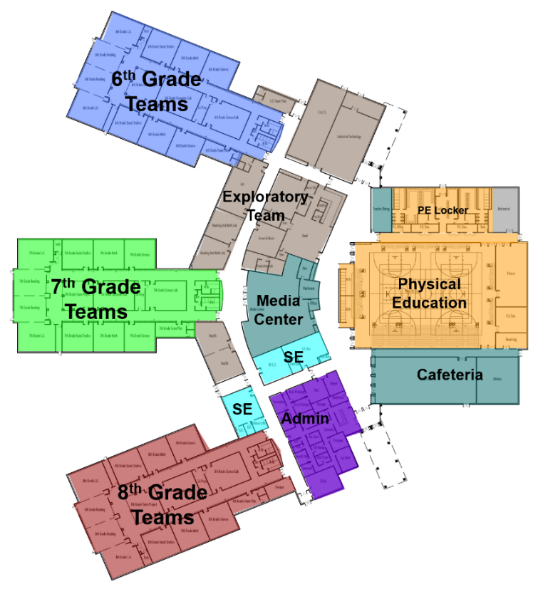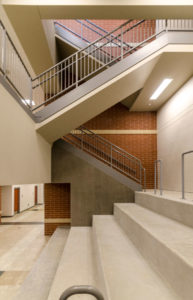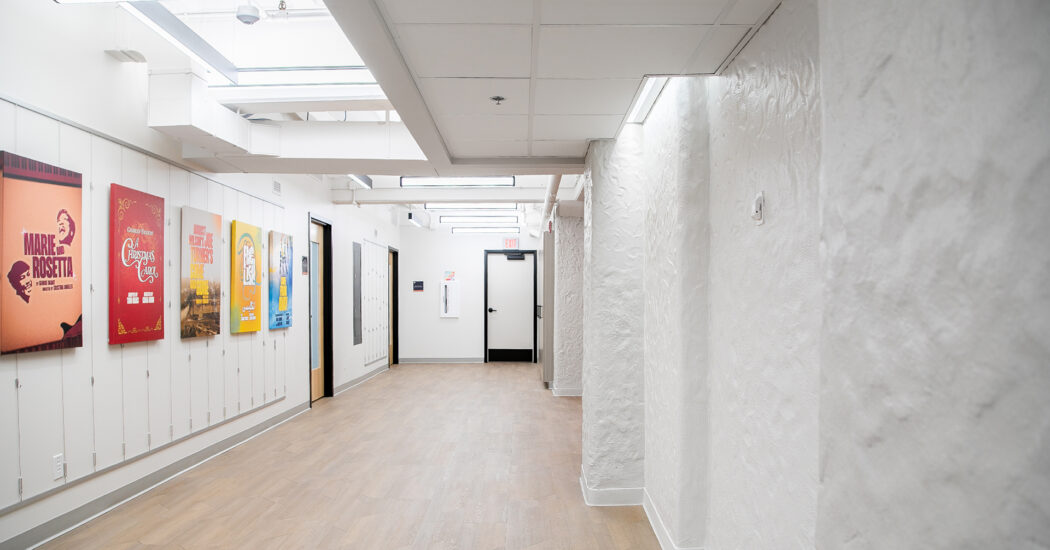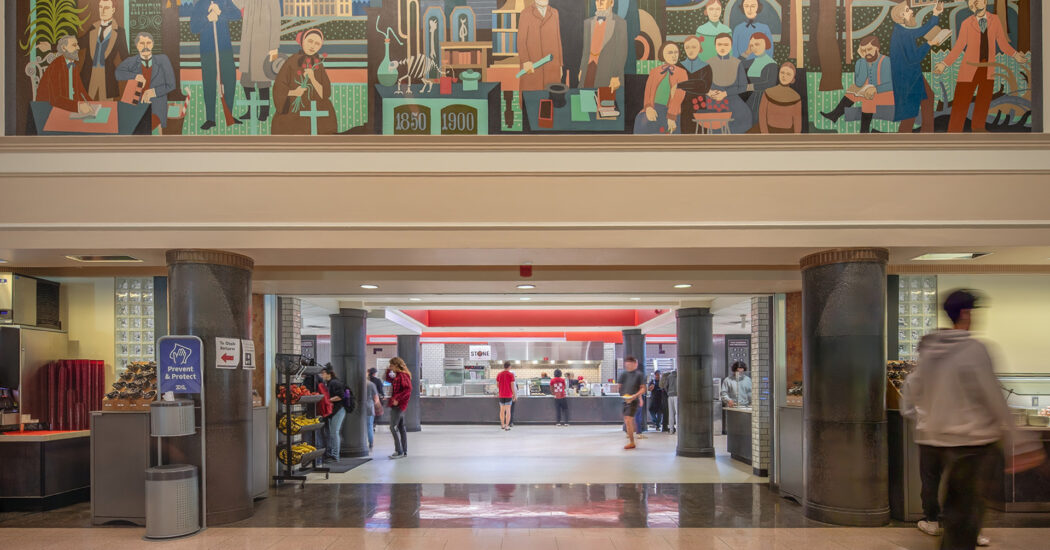Designing for the Middle School Mind
-
Category
Studio-K12, Innovation -
Posted By
Anna Marie Burrell -
Posted On
Feb 20, 2018
Oh, how complicated (and scary) the mind of a teen works – emotions are high and attention is scattered. They may be more worried about the gossip in the hallway than the lessons in the classrooms. Distractions are everywhere, and it can be difficult to keep them engaged. But to be fair, it isn’t entirely their fault. The brain doesn’t fully mature until about age 25, meaning teens are more likely to be less organized and focused at their age.1
According to scientist James Bjork, teens crave activities that lead to a high level of excitement or require little effort. As designers, we also need to consider this while working on a middle school project. The classrooms, common spaces, and active areas need to engage and relate to the middle schoolers’ minds.
As designers, there are several ways we can help teachers keep students attentive and engaged:
- Furniture: having flexibility within the classroom for the students and teachers are essential to interactive learning. Teacher’s often have a fixed desk either in the front or the back of classroom as well as a mobile station, allowing for more student interactions. Selecting furniture that has a mix of pieces ranging from flexible chairs, stools, desks, and tables can promote movement within the classroom.
- Acoustics and technology: teens do best with active learning styles, opposed to passive. This requires a classroom to be well-equipped with the latest technology. Mobile white boards or smart boards allow the technology to be effective regardless of the furniture configuration. By designing a tech-rich environment, teachers are then able to switch up their lessons more spontaneously – keeping those teen-minds more interested in the tasks at hand. There is also evidence that proves attaching music to a lesson helps students retain the information.2
- Bottle filling stations: letting kids drink water during class time has proven to help their brains function smoothly and lengthen attention spans2. By providing water bottle filling stations, kids can have their H2O in class.
- Quiet breakout space or focus room: for when a student needs to take some time to regroup, set those emotions aside, and then get back to work. Spaces like this, inside a classroom or separate gives their minds a break from the fast-paced world they live it.
- Bring nature in: include plenty of opportunity for students to see outside since they no longer get recess time. Including big windows in the classrooms will allow natural light to flood the space, increasing productivity and improving moods. We do keep shades/blinds in mind while designing for when teachers need a dark room for projector-related activities.
- Common social spaces: because many teens prefer to interact with their peers, we can create a deliberate space to do that between class periods.
In addition to thinking about middle school design that will be engaging, we also keep safety and security in mind.
The big jump from the small, safe elementary school into the new, exciting middle school setting is a big bite to chew for most kids – including their parents. It will be important for us, as architects, to design a non-threatening environment to help students feel safe and put parents’ fears more at ease.
If hallways are tight and cramped, teen emotions are heightened, and shoving can begin. Therefore, we are designing corridors to be wide enough to keep students from bumping into one another during passing periods. One way to elevate hallway anxiety is by separating grade levels in wings – keeping the smaller 6th graders away from the bigger 8th graders. A good example of a project where we did this was at George Rogers Middle School.

Another way to keep grade levels separated is by floors, which we’ve done at Greenwood Middle School.

It is true that teens will all learn, act, and respond in different ways, but the path for design is clear. By designing an environment with “the teenager’s view of their environment in mind and where there are “active, stimulating place where people can talk and share, quite places for downtime, and space for movement is planned for,” we can lend a hand to teachers.
___________________________________________________________________________________________________
1 McDonald, Emma S. “A Quick Look into the Middle School Brain.” NAESP, Jan. 2010. https://www.naesp.org/sites/default/files/resources/2/Principal/2010/J-Fp46.pdf
2 Wolpert-Gawron, Heather. “Tween Brains, Part III: How to Work It Out In The Classroom.” Tween Teacher, 30 Oct. 2013, tweenteacher.com/2013/10/30/tween-brains-part-iii-how-to-work-it-out-in-the-classroom/.







